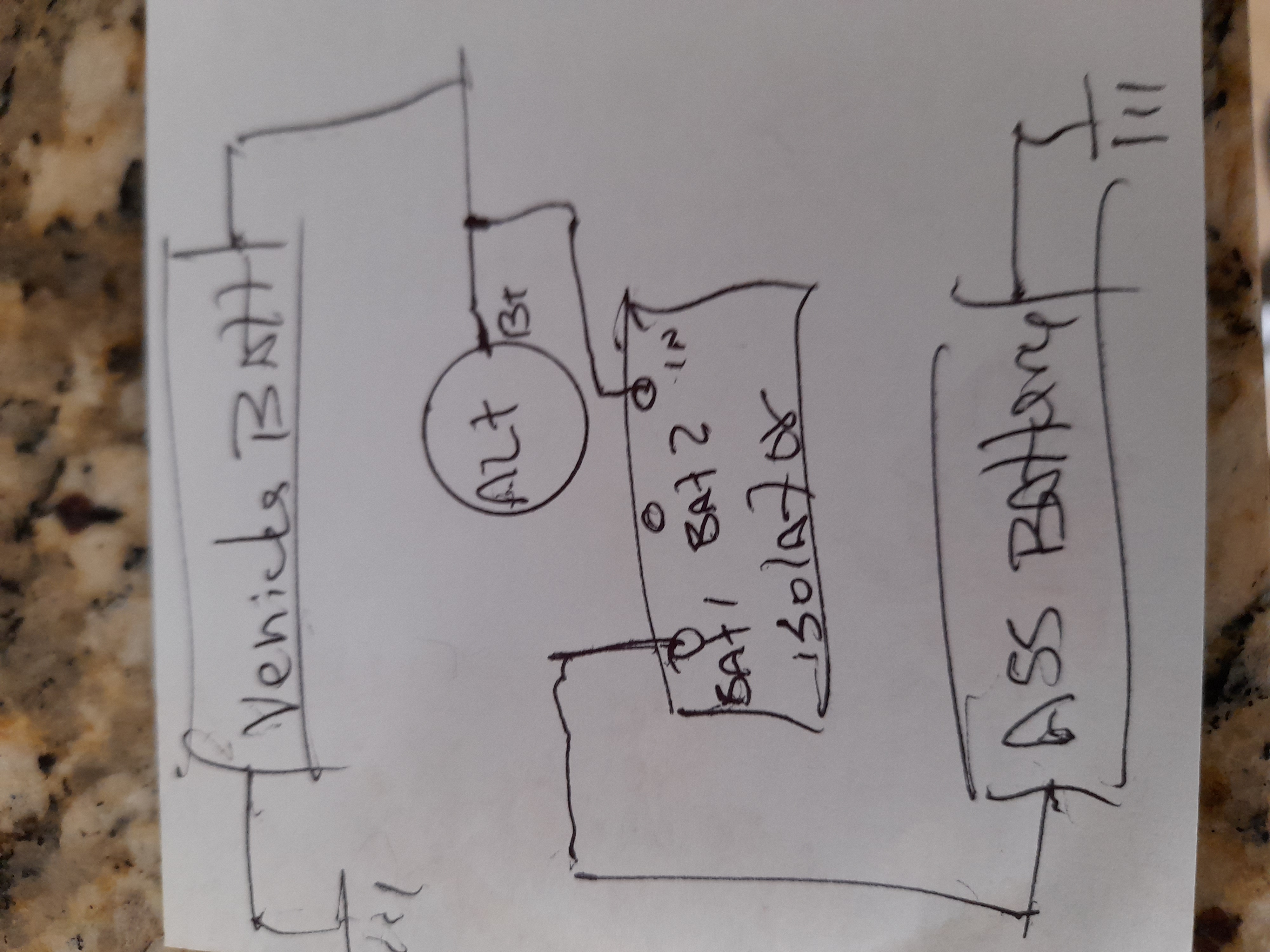I installed a 80-2SC on my 2013 Cadillac EXT. The alternator does not work as it needs some current to excite it. I have looked at the units that have an "Energize" connection but the wiring diagram shows it connected to the alternator at a connection other than B+. My alternator only has the B+ terminal. Can I connect the it to the B+? Ideas on how to make this work?
- Home
- Anonymous
- Sign in
- Create
- Spaces
- Grafana
- Node-Red
- Unsupported topics
- Questions & Answers
- Modifications
- Communauté francophone
- Deutschsprachiger Bereich
- Preguntas en Español
- Explore
- Topics
- Questions
- Ideas
- Articles
- Badges
question
A "B+" connection is used only for connecting the Battery positive wire that feeds the alternator power to the battery. Normally on a road vehicle, the negative connection is made from the alternator case to the the engine block and then to the frame ground. Your alternator is almost surely internally regulated, which means it does not need--nor can it use--an external source current to excite it without significant modification.
An alternator unlike a generator has to have some voltage to energize the field winding and create the magnetic field to generate electricity. I know older cars get that through the idiot light. My application does not have a connection for that exciter voltage. It apparently gets power from the B+ connection which is always hot. I'm trying to figure out how to provide that when connection two batteries with an isolator. The B+ on the alternator would feed the isolator input and would not be directly connected to the battery so there is no exciter voltage to start the alternator working.
I am not sure that I understand what your issue actually is. Generators DO actually require excitation of the field coil, it just happens internally. Like on your alternator.
Do you understand that if you disconnect the B+ terminal from the batteries while the alternator is charging the diodes in the alternator will be destroyed by the resulting voltage spike? If that is clear, to you, then maybe someone else can help.
 A generator has permanent magnets so will charge with out any exciter current. I do appreciate your attempt to help. In my vehicle the alternator B+ is always connected to the battery. I'm trying to add an accessory battery to the system that will be charged separately from the vehicle battery. Keeping the stock set up I can't isolate the new battery without it potentially drawing down the vehicle battery.
A generator has permanent magnets so will charge with out any exciter current. I do appreciate your attempt to help. In my vehicle the alternator B+ is always connected to the battery. I'm trying to add an accessory battery to the system that will be charged separately from the vehicle battery. Keeping the stock set up I can't isolate the new battery without it potentially drawing down the vehicle battery.
The diagram you have provided shows connections that should work.
Alternators have gone through an evolution of how they are regulated, initially external regulators were used then they were placed together with the alternator. More recently some vehicles are using a PWM signal generated by the vehicles ECU. If your alternator just has the connection to the battery then it has an internal regulator.
Thanks, I know it has an internal regulator. With it connected by my diagram if there is a load on the accessory battery while the truck is not running it will also drain the vehicle battery. I'm trying to isolate the two so if one gets drained the other will still have power. I may have to go with a relay instead of an isolator so the batteries will not be connected unless the vehicle is running. I have used an isolator on older vehicles that had an alternator with an internal regulator but a connection for the exciter current separate from the B+.
Related Resources
question details
24 People are following this question.
